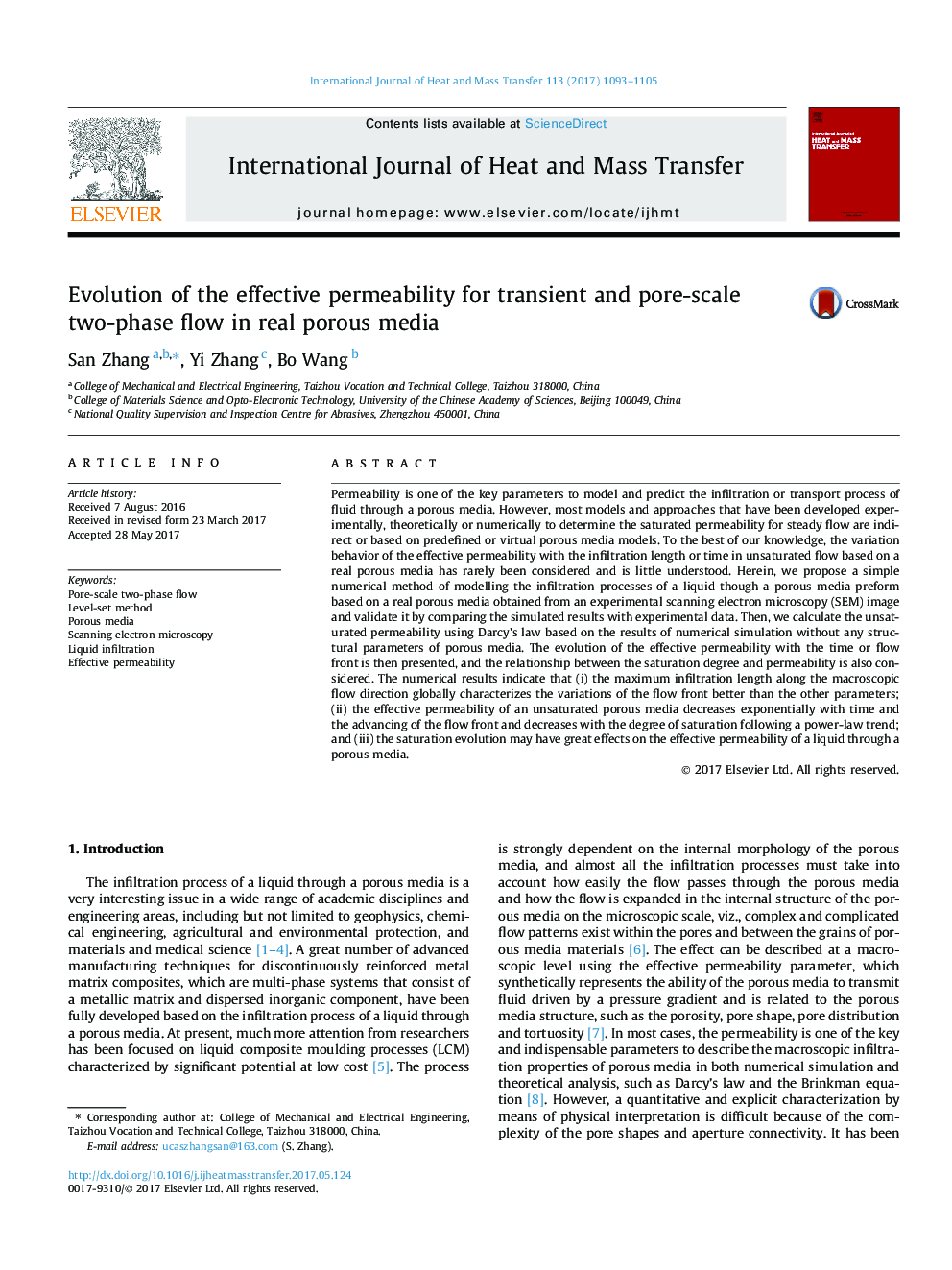| Article ID | Journal | Published Year | Pages | File Type |
|---|---|---|---|---|
| 4994236 | International Journal of Heat and Mass Transfer | 2017 | 13 Pages |
Abstract
Permeability is one of the key parameters to model and predict the infiltration or transport process of fluid through a porous media. However, most models and approaches that have been developed experimentally, theoretically or numerically to determine the saturated permeability for steady flow are indirect or based on predefined or virtual porous media models. To the best of our knowledge, the variation behavior of the effective permeability with the infiltration length or time in unsaturated flow based on a real porous media has rarely been considered and is little understood. Herein, we propose a simple numerical method of modelling the infiltration processes of a liquid though a porous media preform based on a real porous media obtained from an experimental scanning electron microscopy (SEM) image and validate it by comparing the simulated results with experimental data. Then, we calculate the unsaturated permeability using Darcy's law based on the results of numerical simulation without any structural parameters of porous media. The evolution of the effective permeability with the time or flow front is then presented, and the relationship between the saturation degree and permeability is also considered. The numerical results indicate that (i) the maximum infiltration length along the macroscopic flow direction globally characterizes the variations of the flow front better than the other parameters; (ii) the effective permeability of an unsaturated porous media decreases exponentially with time and the advancing of the flow front and decreases with the degree of saturation following a power-law trend; and (iii) the saturation evolution may have great effects on the effective permeability of a liquid through a porous media.
Keywords
Related Topics
Physical Sciences and Engineering
Chemical Engineering
Fluid Flow and Transfer Processes
Authors
San Zhang, Yi Zhang, Bo Wang,
